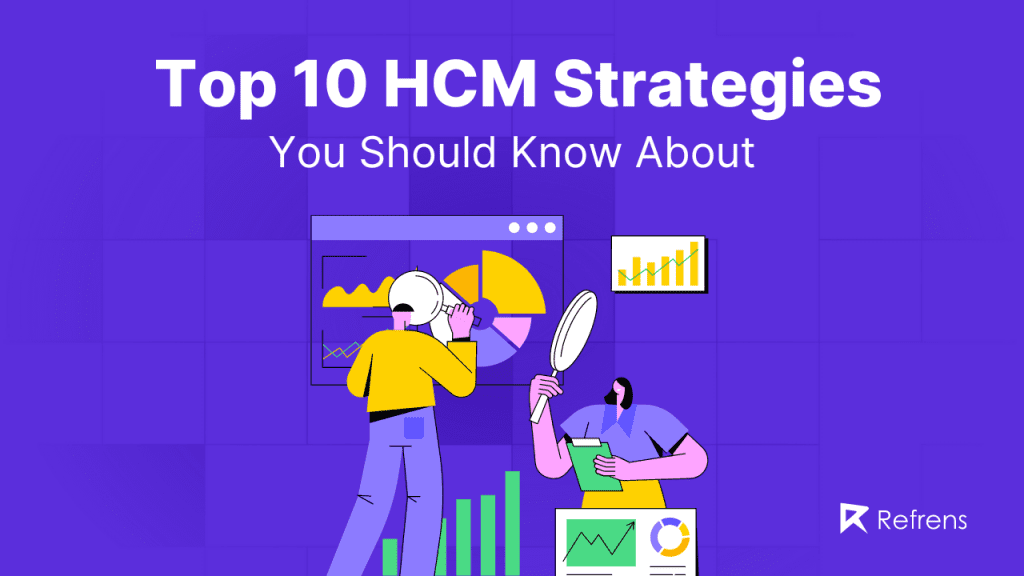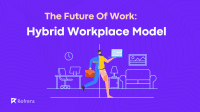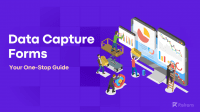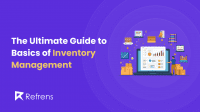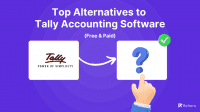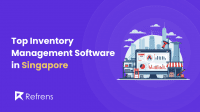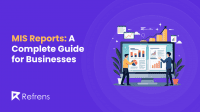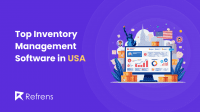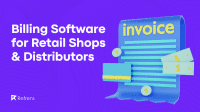In today’s hyper-competitive business landscape, the real value lies in the people who drive your organization forward. Human Capital Management (HCM) strategies play a pivotal role in nurturing, developing, and maximizing the potential of every employee.
Harnessing the power of technology has become a focal point in achieving these goals. Many leading organizations are integrating HCM and ERP systems to centralize employee data, optimize HR functions, and gain actionable insights into workforce management.
These integrated systems offer a unified approach, merging both human resources and enterprise resource planning functions, ensuring that the workforce is managed in harmony with the company’s overarching strategies and needs.
Armed with such technological capabilities and the right HCM strategies, companies can create a conducive environment where every individual feels valued, motivated, and aligned with the firm’s vision.
These tactics aim to improve the management of your workforce but also boost productivity and morale in the process. Intrigued yet? Let’s dive in!
Comprehensive Onboarding
Comprehensive onboarding is crucial for integrating new employees into the company, enhancing their performance, and increasing their likelihood of staying with the organization. It involves a well-structured process that introduces new hires to company culture, values, and job expectations and provides them with the necessary tools and resources to succeed in their roles.
The Importance of a Well-structured Onboarding Process
A structured onboarding process benefits both employers and new hires by swiftly integrating employees into their roles and company culture, fostering unity and loyalty. It ensures new hires enhance their skills through initial training and provides essential job resources.
This clarity from day one boosts productivity and sets clear expectations. Moreover, a positive first impression through meticulous orientation programs significantly improves employee retention rates.
How it Aids in Employee Integration, Performance, and Retention
Onboarding is a strategic process crucial for employee integration. New hires quickly assimilate into your company’s culture, goals, and values, enhancing team cohesion and collective focus. This approach significantly boosts staff performance and retention. Studies show that efficient onboarding can increase new hire productivity by 62%.
Good Feedback Mechanisms
Good feedback mechanisms are crucial for employee development. Employees can improve their skills and performance by providing constant, constructive feedback. Utilizing real-time feedback tools and platforms enhances the effectiveness of these mechanisms.
The Role of Constant and Constructive Feedback in Employee Development
Constant and constructive feedback is essential for employees’ professional growth and development. It improves performance, enhances skills, and fosters team effectiveness. Feedback should be delivered empathetically and respectfully, focusing on improvement rather than criticism.
Constructive feedback encourages positive behaviors and increases team engagement. The goal is to nurture employee growth, boost potential, and contribute to the success of the organization’s human capital management strategy.
Real-time Feedback Tools and Platforms
Real-time feedback tools, such as Engagedly, Reflektive, Zonka, Review Snap, and Tiny Pulse, enable organizations to gather immediate employee feedback. These platforms feature pulse surveys, anonymous feedback options, and customizable forms to measure satisfaction, collect performance data, and identify improvement areas.
They provide a valuable resource for employees to share their thoughts and suggestions, enhancing overall organizational performance.
Flexible Work Arrangements
Flexible work arrangements are becoming increasingly important in today’s workforce management, allowing employees to control their schedules and work environments. Embracing flexibility not only boosts employee satisfaction but also enhances productivity and work-life balance.
The Need for Flexibility in Work Schedules and Environments
Employees are seeking more flexibility and work-life balance, and companies are recognizing the benefits of providing such arrangements. Flexible schedules and work environments that don’t adhere to traditional constraints can increase job satisfaction, reduce stress levels, and improve employee mental well-being.
How it Contributes to Employee Satisfaction and Productivity
Offering remote work, flextime, and telecommuting options helps employees achieve a better work-life balance, reducing stress and burnout. This flexibility improves job satisfaction, motivation, and engagement. Employees with control over their hours and environment are more committed to delivering high-quality results and excellent customer service. Flexible work arrangements enhance employee morale, retention, and overall productivity.
A Succession Plan
A succession plan is crucial for preparing your organization for future leadership needs. You can ensure a smooth transition when key positions become vacant by identifying and developing potential successors. This strategy helps to maintain continuity, minimize disruption, and retain institutional knowledge within the company.
The Importance of Preparing for Future Leadership Needs
Succession planning is crucial for the long-term stability and success of any organization. By proactively identifying and developing future leaders, a company can ensure a smooth leadership transition when needed.
This minimizes disruption and maintains organizational stability. Additionally, having a succession plan in place reduces the need for expensive executive recruitment by nurturing internal talent for promotion to leadership roles.
Steps to Develop an Effective Succession Planning Strategy
Developing an effective succession planning strategy involves several key steps. First, establish clear goals for the program that can guide your efforts. Next, identify employees with potential and provide them with development and training opportunities to groom them for future leadership roles.
Regularly evaluate and monitor the succession plan to ensure its effectiveness and make necessary adjustments. It’s important to embed succession planning in your organization’s culture so that there is a steady pipeline of capable leaders ready to step into key roles when needed.
Employee Well-Being Initiatives
Promoting employee well-being is crucial for optimizing performance. Implement wellness programs, flexible work hours, and mental health support to create a healthy and supportive workplace environment.
The Impact of Employee Well-Being on Performance.
Employee well-being has a significant impact on job performance and overall workplace success. Studies have shown that when employees are satisfied, have a good work-life balance, and feel supported in managing stress, they are more engaged and productive.
Creating a positive workplace environment that prioritizes health and wellness can lead to higher levels of job satisfaction and employee engagement. By implementing employee well-being initiatives such as stress management programs, promoting work-life balance, and providing resources for physical and mental health support, organizations can create an environment where employees thrive both personally and professionally.
Strategies to Promote Physical and Mental Health.
Promoting physical and mental health in the workplace is crucial for employee well-being. Granting workers more autonomy and control over their tasks reduces stress and boosts job satisfaction. Flexible work arrangements, such as remote work and flexible schedules, further enhance well-being by improving work-life balance and reducing burnout.
Learning and Development Programs
Learning and development programs play a crucial role in enhancing employee skills and knowledge. These programs provide continuous learning opportunities, allowing employees to grow professionally and stay engaged.
The Need for Continuous Learning Opportunities
Continuous learning is crucial in today’s rapidly changing workplace. It involves acquiring new knowledge, developing skills, and staying relevant in your field. Lifelong learning not only enhances your personal growth but also opens doors to career advancement and increased job satisfaction.
By engaging in continuous learning, you can expand your skill set, increase competence on the job, and generate innovative ideas. Companies prioritizing continuous learning and development foster a culture of growth, leading to higher employee retention rates.
Whether it’s through formal training programs or informal on-the-job learning opportunities, investing in continuous learning ensures that you are equipped with the tools for success in an ever-evolving professional landscape.
How to Implement Effective Development Programs
To implement effective development programs, start by thoroughly assessing your employees’ learning needs and aligning them with your organization’s objectives. This will ensure that the training is targeted and relevant.
Next, focus on program management to ensure smooth execution and coordination. Design the training materials in a way that is engaging and interactive, utilizing multimedia tools if necessary.
For a well-rounded approach, implement the training using various methods such as workshops, online courses, or mentoring programs. Finally, evaluate the effectiveness of your programs through feedback surveys or assessments to continuously improve and meet employee development goals.
Technology Integration
There’s more than one way technology can be integrated into human capital management, such as utilizing software and tools that streamline processes and improve efficiency.
Utilizing Technology for Efficient Human Capital Management
Technology integration plays a crucial role in efficient human capital management. With advancements in HR technology, including AI recruitment tools, organizations can streamline and automate their HR processes, resulting in cost savings and increased efficiency.
Cloud-based HCM software has gained popularity due to its ability to simplify tasks, enhance talent management, and improve employee engagement. Selecting the right HR platform can further amplify these benefits by providing tailored solutions that align precisely with an organization’s unique workforce management needs. By incorporating tools from HRIS and top HRMS, HR Management Templates, HCM provides strategic analysis of the workforce, allowing businesses to make data-driven decisions for better resource allocation.
Examples of Software and Tools that Aid HCM
HCM software plays a crucial role in streamlining and automating various HR processes. Some popular examples of HCM software tools include Oracle HCM Cloud, Workday HCM, SAP SuccessFactors, ADP Workforce Now, and UltiPro.
These tools help organizations manage recruitment, onboarding, talent management, performance management, and employee benefits more efficiently. With cloud-based solutions gaining popularity in recent years, businesses can easily access these systems anytime and anywhere.
Diversity and Inclusion
Creating a diverse and inclusive workplace is a key step for high growth. Without emphasizing the need for respect and acceptance, employees likely won’t reach their full potential. There are several steps organizations can take to foster this environment, such as implementing unconscious bias training and promoting diversity in recruitment and promotions.
The Importance of a Diverse and Inclusive Workplace
A diverse and inclusive workplace is crucial for promoting equality, representation, and collaboration. It goes beyond simply hiring employees from different backgrounds; it involves creating an environment that values and respects the unique perspectives and experiences of each individual.
When organizations prioritize diversity and inclusion, they reap numerous benefits. A diverse workforce enhances creativity and innovation by bringing together people with different ideas and approaches.
Steps to Foster an Environment of Respect and Acceptance
Creating a workplace environment that values and embraces individual differences is crucial for fostering respect and acceptance among employees. One important step is to implement anonymous recruitment methods, which encourage diversity and ensure unbiased assessment of applicants.
By incorporating a varied group of interviewers in the hiring process, companies can foster an inclusive atmosphere and avoid unconscious biases. Additionally, seeking out diverse candidates through targeted recruitment helps broaden the candidate pool.
Data-Driven Decision Making
Implementing data analytics tools and strategies is essential for making informed decisions in human capital management. By collecting and analyzing relevant data, organizations can gain valuable insights into employee performance, engagement, and other key metrics to drive effective decision-making.
Harnessing Data Analytics for Informed HCM Decisions
Data-driven decision-making is a crucial aspect of effective human capital management (HCM). By harnessing data analytics, organizations can improve efficiency, make informed decisions, and achieve cost savings.
Adopting a strategic approach is vital when using data analytics for HCM decisions. HR professionals and business leaders can leverage HR analytics to make evidence-based decisions and predict future trends.
Cloud-based software provides the tools for collecting and analyzing relevant data in real-time. Developing skills in HR analytics is essential for achieving strategic success in managing human capital effectively.
Tools and Strategies for Collecting and Analyzing Relevant Data
Data-driven decision-making is a crucial aspect of effective human capital management. To make informed decisions, organizations need tools and strategies for collecting and analyzing relevant data.
One important tool is HCM software, which allows businesses to gather employee data and utilize analytics. This software enables the collection of key performance indicators (KPIs) that provide valuable insights into employee performance and engagement.
Talent Acquisition and Retention
Implement innovative approaches to attract and retain top talent, such as employer branding initiatives and competitive benefits packages. Focus on creating a positive work environment that values employee growth and development to increase engagement and reduce turnover rates.
Innovative Approaches to Attract and Keep Top Talent
To attract and retain top talent, companies must adopt innovative approaches beyond traditional recruitment strategies. One effective method is to build amazing communities that give potential candidates an inside look into what it’s like working with the company.
This can be achieved through engaging social media platforms, employee testimonials, and virtual tours of the workplace. Additionally, embracing remote hiring practices allows companies to tap into a wider pool of talent from different locations.
The Role of Employer Branding and Competitive Benefits
Employer branding plays a crucial role in talent acquisition and retention. With 86% of job seekers considering employer reputation important, organizations must focus on building a positive image.
By showcasing their company culture, values, and benefits, they can stand out from competitors and attract top talent who resonate with their brand. Investing in employer branding not only improves employee engagement but also gives companies a strategic advantage in the competitive market.
Conclusion
Effective Human Capital Management (HCM) strategies are crucial for optimizing the workforce and driving success. Key strategies include comprehensive onboarding, constructive feedback, flexible work arrangements, data-driven decision-making, employee well-being initiatives, learning and development programs, diversity and inclusion efforts, talent acquisition and retention strategies, and technology integration.
These approaches improve employee integration, performance, retention, and overall business outcomes. By prioritizing these areas, businesses can create a thriving workplace that attracts top talent and ensures long-term success. Embrace these HCM strategies to stay ahead.
